What makes Panama so attractive for US expats and retirees?
In this comprehensive guide, I’ll cover 9 reasons our Freedom Files clients and tens of thousands of American citizens have chosen to retire in Panama – and how you can too:
- Cost of living
- Geography and natural diversity
- Healthcare
- Travel connectivity
- Lifestyle
- Residency options
- Safety and stability
- Banking
- Taxes
Or watch the video here instead:
Cost to Retire in Panama
Typically, a significant drop in your cost of living would mean an equally significant drop in your quality of life. Retirement in Panama can unlock savings of up to 50% without sacrificing your comfort.
While millions of US retirees are forced to downsize into tiny condos in Florida, push off retirement 5 or 10 more years, and give up the things they love in order to earn just a bit more before retirement, thousands already retired and are living better in Panama for less.
A couple Freedom Files clients from Georgia just moved into a two-bedroom, ocean-view apartment in downtown Panama City. Avenida Balboa to be exact. The main drag. Modern kitchen, doorman security, pool on the roof, concierge, fully-outfitted gym. They’re paying US$1,500 per month.
Compare that to Miami, where a similar apartment with amenities can cost US$5,000 or more. I used to live just a few blocks away from that same building in Panama City’s Punta Paitilla. Each morning, I’d walk the waterfront promenade past parked yachts that cost more than most American retirement accounts.
And that’s just housing.
You can eat lunch at a beachside café (I prefer fresh ceviche and a cold beer) for US$4.50. Full-time maid service? Less than what you’d pay for a nice lunch in Manhattan.
Rent, groceries, transportation, healthcare – Nearly every line item on your budget can drop by 30-70% when you retire in Panama. If you’re looking for hard data, Numbeo says Panama’s overall cost of living is 35-50% lower than most US cities.
That means more left over every month for travel, for your grandkids, for enjoying the life you spent decades working for.
And we’re not talking about a severe drop in quality of life either. Panama City offers a modern center, with fiber internet, top restaurants, high-rises, and international brands – not roughing it in the jungle.
For a lot of our American clients, moving to Panama feels like escaping a system that punishes you for retiring and entering one that rewards you each and every day.
Next, let’s look at why Panama’s geography gives you options most countries can’t.
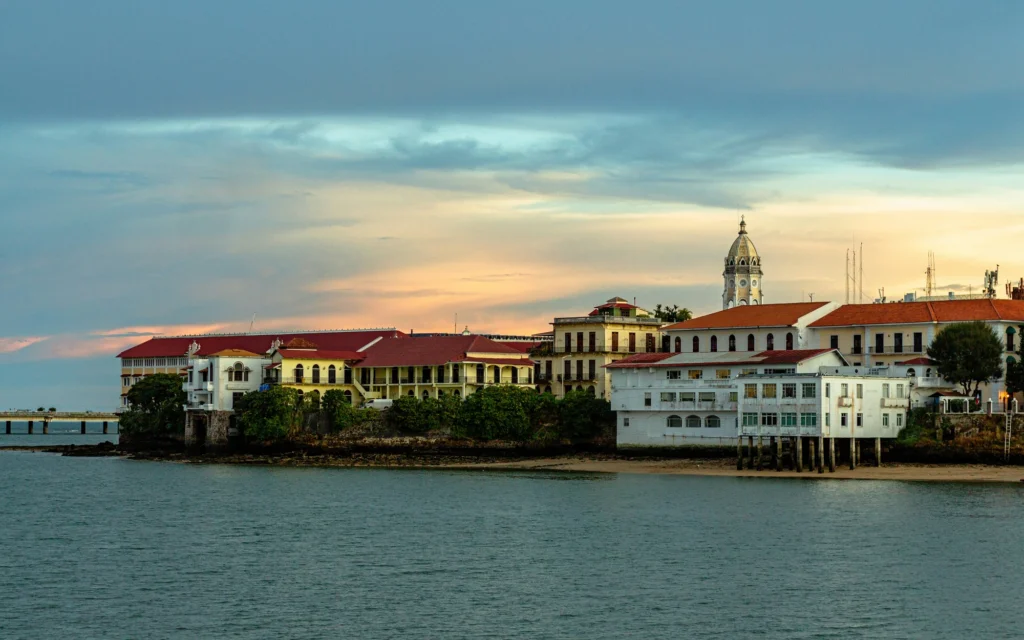
Geography & Natural Diversity in Panama
If you retire in Panama, you don’t have to pick between the beach, the mountains, or the city. You can get all three just a few hours apart.
I’ve traveled the world and lived in over ten countries. I promise you that that diversity is rare. Most countries make you choose.
But in Panama, you can surf warm Pacific waves in the morning, have coffee in a cool mountain town by lunch, and enjoy rooftop drinks in the world-class, major capital city by dinner.
Love the ocean? Panama gives you two coastlines – Pacific and Atlantic – with year-round warm water. Try Bocas del Toro or the Azuero Peninsula if you want beach towns that are more relaxed, friendly, and still affordable.
If you prefer mountain living, you can head to Boquete (major retiree destination) or El Valle de Antón. These aren’t dusty hill towns. They have cool 70°F weather, clean air, world-class hiking, and coffee farms.
Want international city life? Panama City is as modern as it gets. Skyscrapers, rooftop bars, sushi restaurants, private hospitals, Whole-Foods-style markets, yoga studios, waterfront views – Really anything you could want in a cosmopolitan home-away-from-home that runs on the US dollar.
I spent nearly a year bouncing between all three: Surfing in Playa Venao, hiking through the cloud forests in Boquete, then back to my high-rise apartment overlooking the Panama City skyline. I never felt like I had to choose one lifestyle over another. Each vibe has its pros and cons.
Retirees love Panama because here, you can shape your retirement around your lifestyle. The country doesn’t dictate how you live, like it would in so many other places.
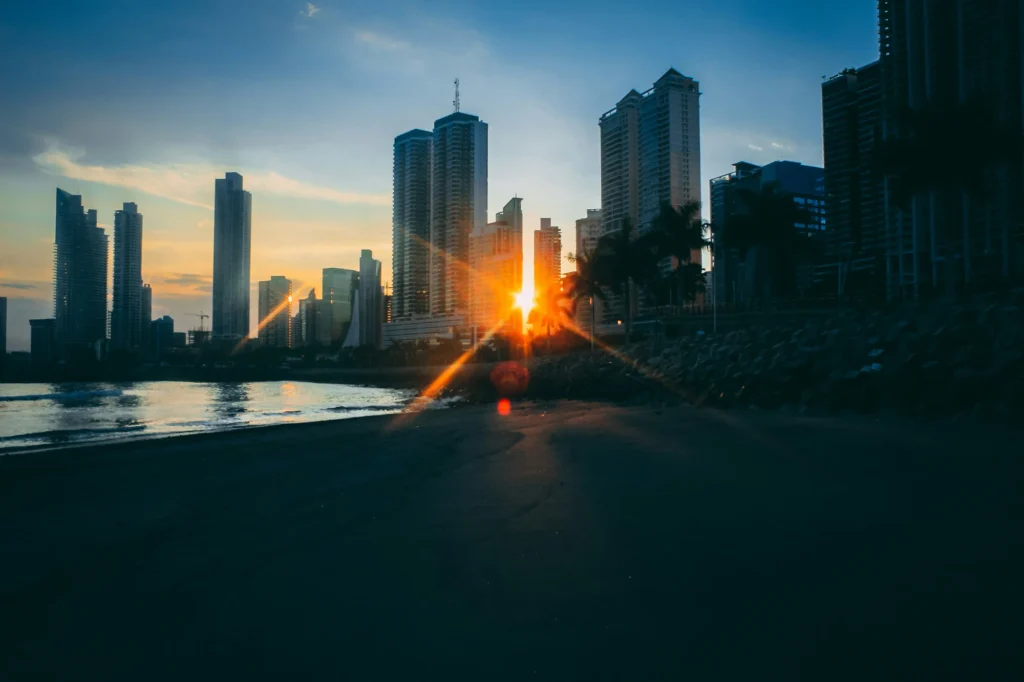
Healthcare in Panama
Let’s talk about something that keeps a lot of Americans up at night: healthcare. In the US, even with “good insurance,” one hospital visit can wreck your finances. In Panama, healthcare is reasonable.
You’ll find top-tier hospitals – many affiliated with American institutions like Johns Hopkins and the Cleveland Clinic. The most advanced facility in the country, Hospital Punta Pacífica, is located right in Panama City and is considered one of the most technologically advanced private hospitals in Latin America.
So what does it cost to actually use these services?
- A specialist visit: Around US$50
- Emergency room: Anywhere from US$30-$200
- Lab work, imaging, surgery: A fraction of what you’d pay in the US
If you retire in Panama, you can buy private insurance plans starting at just a few hundred dollars per year. Many expats also pay out of pocket because it’s that affordable.
And here’s something else worth knowing: Retirees in Panama, especially those on a Pensionado visa and permanent residency, receive up to 25% discounts on healthcare expenses. That’s on top of already lower prices.
It’s true that Medicare doesn’t cover you abroad. But with costs this low, most Americans in Panama don’t miss it.
So far, we’ve covered the cost savings, the natural beauty, and the healthcare. But none of that matters if getting to Panama is a hassle in the first place.
Travel Connectivity in Panama
What’s the point of retiring abroad if visiting family means a 22-hour, 4-stop travel day with a neck pillow and sleeping pills?
One of the best aspects of retiring in Panama is how close it keeps you to the US – without feeling like you’re still there.
Panama is a major air hub. Thanks to Tocumen International Airport (nicknamed the “Hub of the Americas”), you have direct flights to 18 major US cities, plus Canada, Europe, and the rest of Latin America. Miami? 3 hours. Houston? 4.5. New York? Under 6. You can leave in the morning and enjoy dinner with your grandkids that night.
And this convenience isn’t just for you. Friends and family can visit without spending thousands or hopping planes like a backpacker. For business travelers, investors, or part-time retirees who want flexibility, Panama makes bouncing between two places easier than almost anywhere else in Latin America.
Lifestyle for Retirees in Panama
Forget the stereotype of a sleepy beach town with only a fruit stand (although Panama can offer that if it’s what you’re looking for). In terms of lifestyle, Panama City is the real deal.
This is not just the capital of Panama. It’s one of the most modern, connected cities in the Western Hemisphere. A place where you can find rooftop cocktail bars, Whole-Foods-style supermarkets, Michelin-caliber restaurants, world-class gyms, international schools, and yes, even your favorite organic almond milk.
While Panama City won’t win awards for being the most fun, lively, cultural city in the world, it gets the job done for those you don’t want to give up any conveniences they enjoy in the US. You’ll have access to Uber, high-speed fiber internet, English-speaking doctors, Amazon deliveries, and every comfort you’ve grown used to – without the price tag or pressure of US city life.
The skyline rivals Miami. Avenida Balboa, the main waterfront strip in downtown Panama City, is lined with skyscrapers, designer condos, bike lanes, and green parks. Walk through the historic district of Casco Viejo, and you’ll find restored colonial architecture, cool street life, and some of the best international food scenes in Latin America.
On that note, Panama City is incredibly international. You’ll meet Venezuelans, Colombians, Canadians, Spaniards, Arabs, Germans, Chinese, and yes, plenty of Americans who’ve made the leap and never looked back.
When I lived in Panama City, I had rooftop dinners, US$9 Uber rides, and a fully equipped gym in my building. It didn’t feel like a downgrade from the US.
If you want a non-isolated retirement with culture, community, and comfort, Panama City might be exactly what you’re looking for.
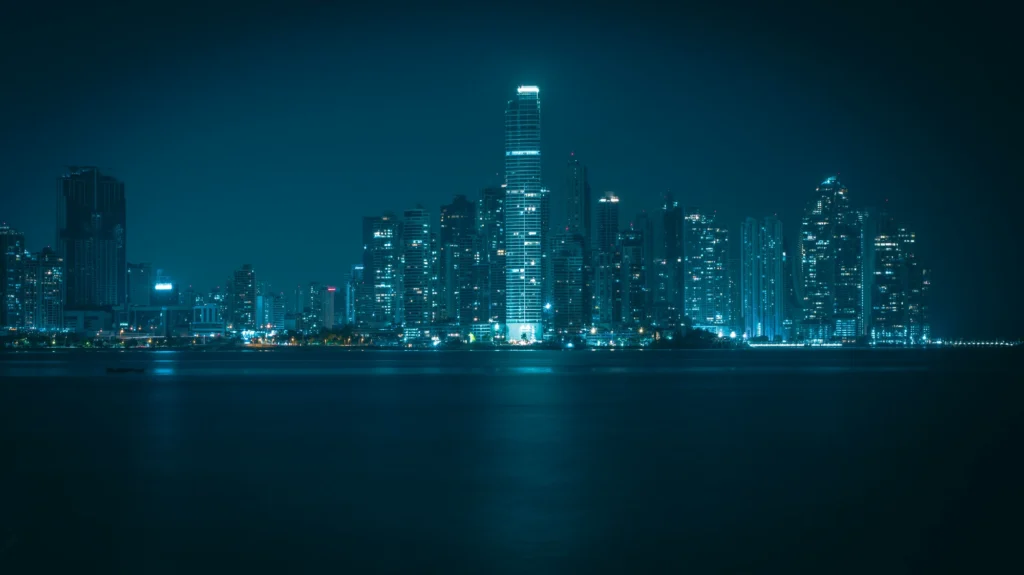
Residency Options & How to Retire in Panama
For most people looking to retire abroad, the hardest part is just staying legally in the destination they’ve chosen. Visas can feel like a maze with proof of income, investments, language tests, renewals, red tape.
But not in Panama.
If you want to retire in Panama, the country makes it refreshingly easy.
Let’s start with the Pensionado Visa, one of the best retirement visas in the world. If you have US$1,000 per month in retirement or passive income, you qualify. That’s it.
This visa gives you permanent residency, plus discounts of up to 50% on things like medical care, flights, hotel stays, restaurants, and utilities. There’s no minimum time in-country required, just one visit per year to keep your status active. And yes, this visa can lead to citizenship after five years. But this can be a little complicated because naturalization requires the president’s sign-off. Yes, they take citizenship seriously here.
Then there’s the Friendly Nations Visa. If you’re not quite retired or don’t have a fixed monthly income, this is the better option, especially if you plan to purchase a home in Panama regardless. To qualify, you just need to meet one of these three criteria:
- Start a business and employ yourself
- Invest US$200,000 in Panamanian real estate
- Deposit US$200,000 in a local bank account
All three paths lead to immediate permanent residency, with no annual renewals or multi-step approvals.
Compared to Spain, Portugal, or even Costa Rica, Panama’s immigration process is cleaner, faster, and designed for Americans.
We help clients through this process every week. If you want help choosing the right path, setting it up legally, and handling the paperwork, book a Freedom Consult. We’ll walk you through every step and all your available options.
Safety & Stability in Panama
Let’s be honest: Poor safety during retirement is a dealbreaker. You can have the best beaches, the lowest taxes, and the prettiest sunsets, but if you don’t have peace of mind, what’s the point at the end of the day?
When you retire in Panama, you’re moving to one of the safest and most stable countries in Latin America.
Panama isn’t on the daily news for riots, coups, or crime waves. It doesn’t have the volatility of Venezuela or the political cycles of Peru. It’s a quiet, neutral country with a dollarized economy, strong ties to the US, and a government that’s heavily focused on tourism, trade, finance, and corporate business.
In fact, Panama has one of the highest credit ratings in the region and a legal system modeled on the US judiciary. The energy on the ground reflects that.
Whether I was walking around Casco Viejo at night or catching an early run along the Cinta Costera, I never once felt unsafe while living here. That’s not something I could say about every city in Latin America. And that matters.
When clients ask us where they can enjoy a peaceful, financially secure retirement without looking over their shoulder, Panama is typically one of the few countries we recommend in Latin America.
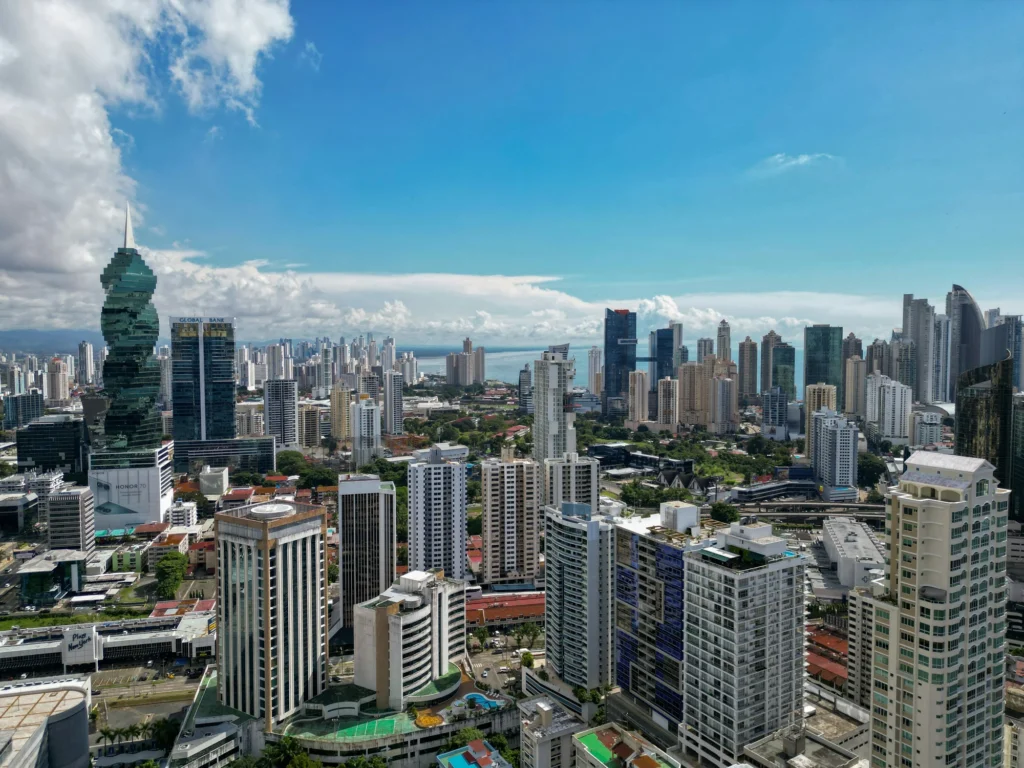
Banking in Panama
If you’ve ever tried calling your bank in the US, waited on hold for 40 minutes, gotten transferred four times, and still didn’t get an answer, you’ll love banking in Panama.
Because here? Things just work.
When you retire in Panama as a resident, you can open a local bank account, pay bills online, make international transfers, wire money to and from the States, and even talk to a human if you need help.
Panama’s financial system is built for international business. It’s dollarized (you’ll use US dollars for everything), has little currency risk (especially if you too earn dollars), and is home to dozens of reputable banks – from large regional players to global institutions.
The setup process can require a little paperwork and time. But once you’re in, you’re in. Most expats who bank here describe it as what US banking used to feel like before the apps and algorithms took over.
If you work with the Freedom Files team during your residency process, we can help you set up a proper account along the way.
Taxes for Retirees in Panama
This may be the one you’ve been waiting for. And we may have saved the best for last: When you retire in Panama, your foreign income – whether from retirement, investments, rental properties, or business – is not taxed.
Panama runs on a territorial tax system, which means the government only taxes income generated inside the country. So if you live in Panama, but your money comes from outside, you pay zero Panamanian tax on that income.
Let’s break that down clearly:
- Earn dividends from US stocks? Not taxed in Panama
- Receive a US pension? Not taxed in Panama
- Get Social Security? Not taxed in Panama
- Have rental income from a Florida condo? Still not taxed in Panama
Note: Don’t forget that if you’re a US national, you must file and pay taxes annually to the IRS until you’re no longer a resident or citizen.
Because of Panama’s tax setup and with the help of credits and exclusions like the Foreign Earned Income Exclusion in the US, you can often cut your global tax bill close to zero.
And if you do start earning income in Panama (say, from a local business or property), personal tax rates are still modest, much lower than US federal rates.
Bottom line? Panama isn’t trying to take your money. In fact, the system is structured to let you keep more of it. What a refreshing dynamic.
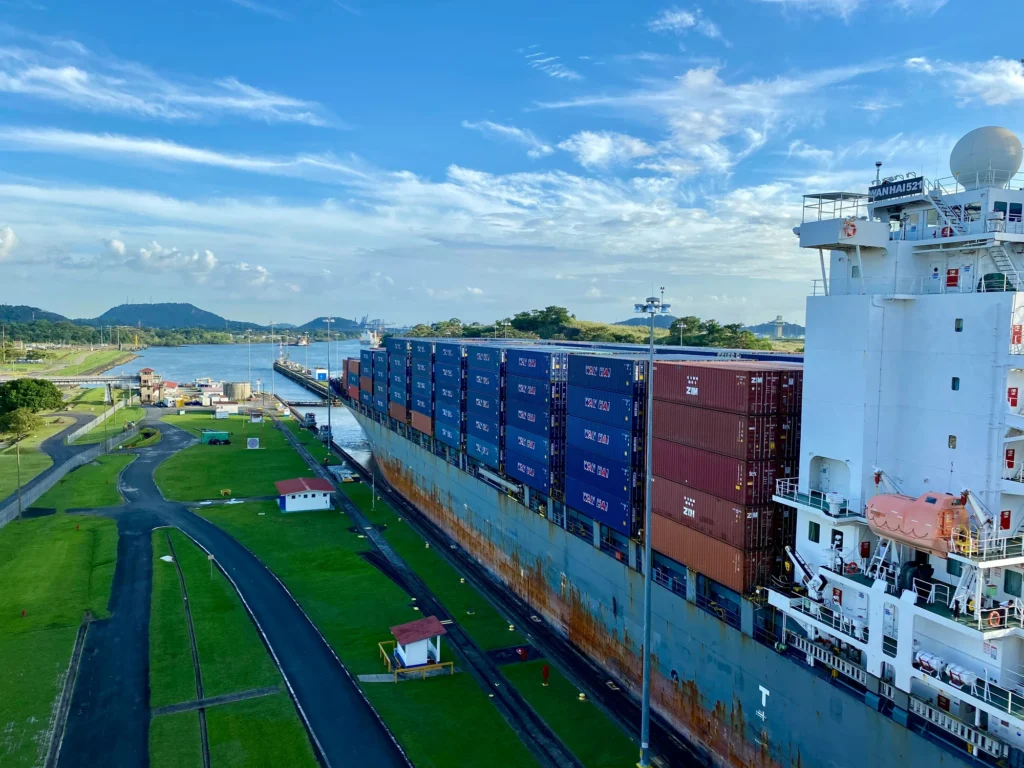
When our clients retire in Panama, many tell us the same thing: They feel like the game finally changed. Like they stopped playing defense and started winning.
If you want to explore your retirement dreams in Panama or any other location, the Freedom Files can help you identify the right jurisdiction for your goals, find the right immigration pathway for your circumstances, and help you relocate easier and more seamlessly than you can imagine. To get started, check out more information about how to retire in Panama or book your Freedom Consult to get started.


